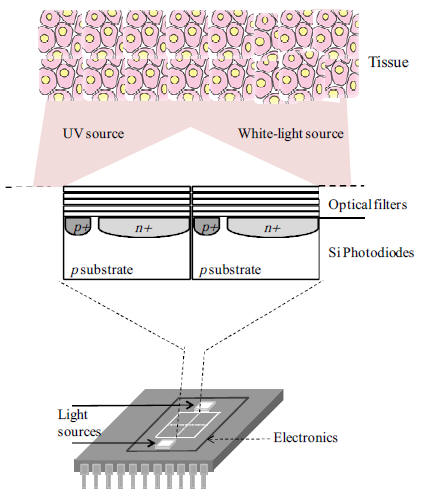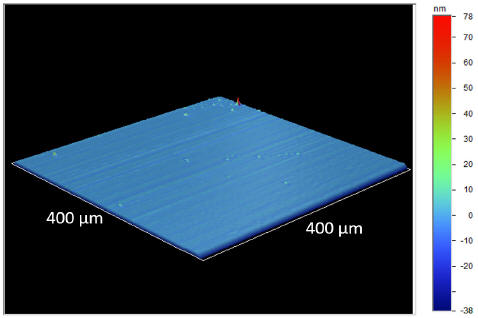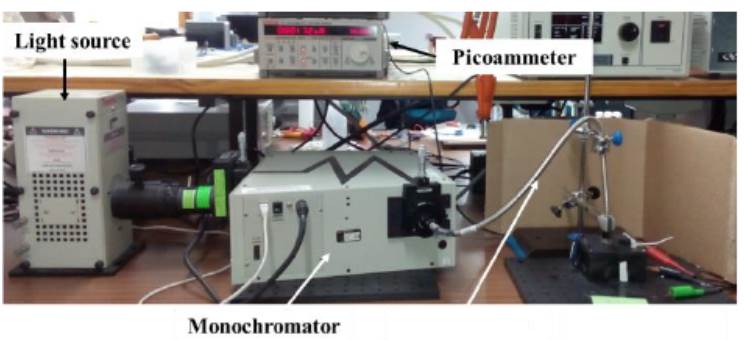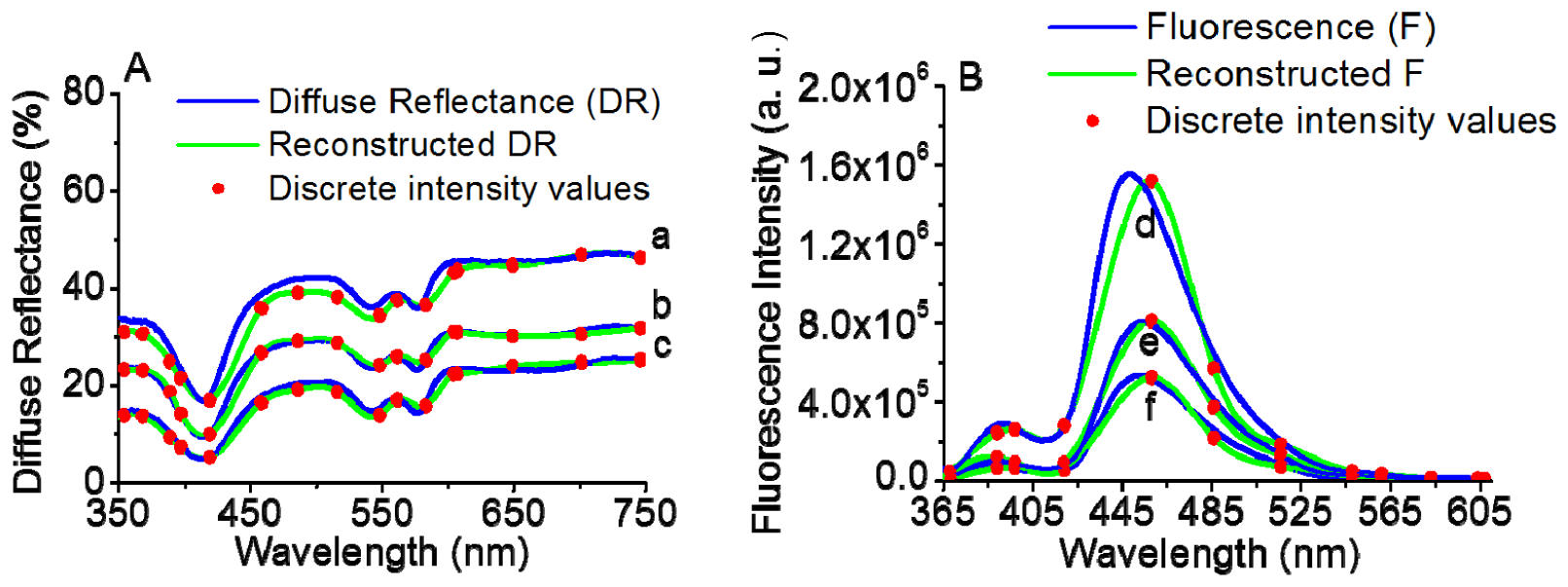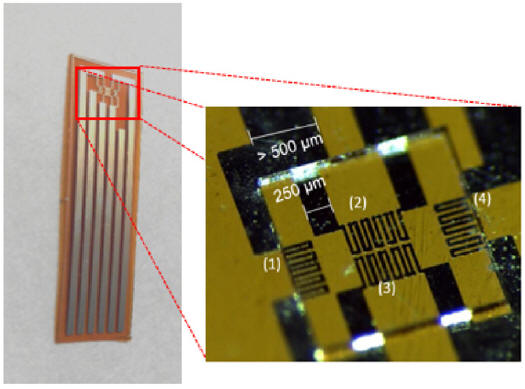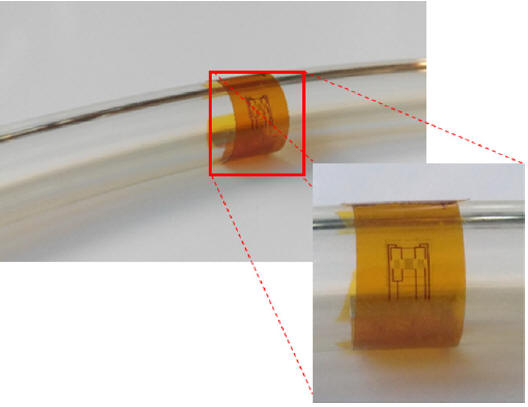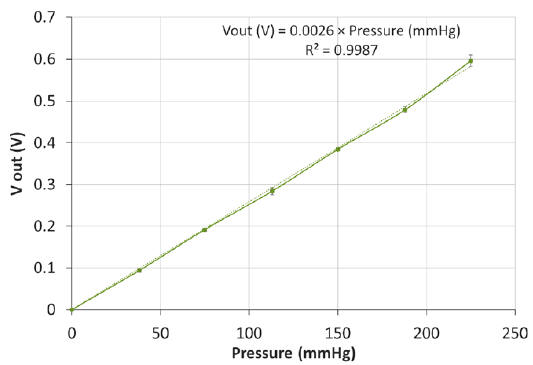
Universidade do Minho
Escola de Engenharia
Dept. Electrónica Industrial
This work is funded by FEDER funds through the Eixo I do Programa Operacional Fatores de Competitividade (POFC) QREN, project reference COMPETE: FCOMP-01-0124-FEDER-020241, and by FCT- Fundação para a Ciência e a Tecnologia, project reference PTDC/EBB-EBI/120334/2010.


Título: "Espectroscopia e (bio)sensores integrados num microssistema para a detecção de displasia gastrointestinal". Duração do projecto: Abril de 2012 a Março de 2015. Entidade financiadora: Fundação para a Ciência e a Tecnologia PTDC/EBB-EBI/120334/2010 e COMPETE: FCOMP-01-0124-FEDER-020241 (financiamento 104 000,00 €).
Title: "Microsystem with integrated spectroscopy and (bio)sensors for the detection of gastrointestinal dysplasia". Project duration: April 2012 to March 2015. Funding: FCT - PTDC/EBB-EBI/120334/2010 and COMPETE: FCOMP-01-0124-FEDER-020241(budget 104 000,00 €).
Abstract:
Gastrointestinal (GI) cancers are among the fifth most common cancers worldwide, representing a significant burden on society with a major impact in economy and quality of life. Epithelial cancers are usually preceded by pre-cancerous or dysplastic changes that affect both the epithelium and connective tissue. An early identification of cancer, preferably before macroscopically visible changes occur, is a major goal in medicine since the chances of an effective treatment considerably increase when the disease is detected at the dysplastic stage, improving the survival rate. The World Health Organization has estimated that nearly one-third of cancer burden could be decreased if lesions were diagnosed and treated at its earliest stages. Unfortunately, early cancerous lesions are difficult to detect using standard screening methods: dysplasia is not readily identifiable by visual inspection during routine endoscopy. As a consequence, physicians often take a large number of unnecessary biopsies to increase the chances of detecting invisible lesions, which results in sampling errors, high costs associated with the procedure, and physical and psychological discomforts for the patient. Therefore, more sensitive endoscopic screening methods and tools, which enable differentiation between premalignant and normal tissue, are of scientific as well as of clinical interest. Optical spectroscopy techniques can overcome those limitations and considerably improve the ability to detect dysplasia in vivo, reducing costs and morbidity to the management of cancer. These techniques are based on the relative differences in the way light interacts with normal and abnormal tissues, which during disease transformation acquire altered optical properties. Specifically, diffuse reflectance and fluorescence spectroscopy have the potential to provide microscopic morphological and biochemical information of normal and diseased tissue in real-time, which can be used to establish a diagnosis. However, solutions that include those spectroscopy measurements for classifying dysplasia are based on regular optical fibers that usually have low collection efficiency, thus requiring high quantum efficiency detectors (such as charge coupled device cameras - CCDs) and on costly, bulky and sophisticated illumination equipment (xenon arc lamps, UV lasers). The objective of the proposed research project is thus the development of a chip-sized spectroscopy microsystem for the detection of morphological and biochemical tissue changes that intent to overcome the above drawbacks. The project combines the outstanding properties of diffuse reflectance and fluorescence spectroscopy detection and the concept of co-integration of highly selective thin-films optical interference filters on silicon photodiodes, in order to meet the growing clinical demands for highly sensitive and reliable methods for the detection of dysplasia in the GI tract. Miniaturized ultraviolet and white-light LEDs (light-emitting diodes) will be incorporated on the chip, featuring illumination sources for fluorescence and diffuse reflectance measurements, respectively. Moreover, taking into advantage the microtechnologies powerful tool of the system on-chip integration, for example, the lab-on-a-chip concept, it will be also developed and incorporated on the same chip pH and pressure (bio)sensors, for monitoring some GI tract physiological parameters. These sensors will add essential diagnostic information as a complement to spectroscopy. Overall, at the end of the project a chip-sized device with integrated spectroscopy and multi-sensing functions will be obtained. The dimensions of the optical microsensors (thin-film optical filters and photodiodes) and LEDs can be scaled down to 50x50 μm2 and 1x1 mm2, respectively. Due to its small size, it can be used for ex-vivo tissue assessment (biopsies), for example, at the physician’s office, allowing immediately results. Additionally, it will also have the potential to be integrated within an ingestible pill for in-vivo GI tissue assessment. The microsystem will fulfill important requirements, such as: multidiagnostic functions; high throughput; reduced cost; and disposability. The main project innovation is the use of spectroscopy on-chip integrated with (bio)sensing functions. A huge clinical impact of this device in early stage cancer management is envisioned.
Results:
From the scientific point of view the results show clear the high scientific quality, e.g., it can be seen by the publications: 9 Papers in international journals; 11 Communications in international meetings; 4 Communications in national meetings
The project has contributed for the formation of young researchers: 3 PhD thesis and 5 master thesis, and for the international projection of the involved team.
The main achieved objectives are described, without entering in details once they were already published:
- Development and performance evaluation of a spectroscopy microsystem for the detection of gastrointestinal dysplasia.
- Development of a mathematical/computational model for retrieving data of the measured spectroscopic signals and using that data to reconstruct a spectroscopic signal based only on its extraction on 16 specific spectral bands.
- Development of optical filters co-integrated in CMOS for the spectral range 350-750nm that provide a chip-sized spectroscopy microsystem able to be used at surgical room.
- Development of computational simulations that relate the strain gauges’ placement with the areas with greater strains to increase the overall sensitivity.
- Development of thin-film aluminum strain gauges deposited on top of a Kapton membrane, with a SU-8 diaphragm and wrapped around a catheter to measure the intraluminal pressure in the GI tract (manometry system).
- Development of pH sensitive planar electrodes, by silver electroplating, in a Si substrate.
From the technological point of view:
- Optimized the system for the SU-8 and PDMS microstructures fabrication.
- Implemented a system for the silver electrodeposition.
- Optimized the system for the PVDF deposition by spin-coating.
- Implemented a system for the silicon wet etching with KOH (an open system where evaporation affects)
- Implemented a system for spectrophotometric measurements of transparent and opaque samples.
- Constructed a system for controlling the pressure in a tube that mimic the manometry tube.
Some illustrations:
|
|
SEM micrograph showing the cross-section of the 458nm Fabry–Perot optical filter
|
|
Schematic view of the spectroscopy microsystem (not scaled) |
Surface 3-D map of the 458 nm Fabry–Perot optical filter |
|
Bench-top spectrophotometric measurement setup (monochromator acquired by the project) |
|
|
|
|
|
Experimental spectra measured with commercial equipment (blue lines) and reconstructed spectra (green lines) obtained using the discrete intensity values extracted with the 16 fabricated optical filters (red points) |
|
|
|
|
| Aluminum strain gauges embedded in Kapton (square diaphragm with a side length of 1.85 mm) |
Sensor wrapped around a catheter-like structure |
|
|
|
|
Topographic plot of pressure sensors. |
Amplified output voltage as function of pressure |
 |
 |
| Three planar reference electrodes and a permanently bonded PDMS element |
Integrated planar reference Ag/AgCl microelectrode with PDMS encasing, microfluidic system and an array of pH sensitive microelectrodes |
Publications:
Papers in international journals:
L. R. Silva, S. O. Catarino, P. M. Mendes, S. Lanceros-Mendez, G. Minas - Development of a piezoelectric transducers system to improve mixing of fluids, In Procedia Engineering: Proc. Eurosensors XXVI, September 9-12, 2012, Kraków, Poland, Elsevier, Vol. 47, (2012), p. 706 – 709. http://www.sciencedirect.com/science/article/pii/S1877705812043081
V. F. Cardoso, T. Knoll, T. Velten, L. Rebouta, P. M. Mendes, S. Lanceros-Méndez, G. Minas- Polymer based acoustic streaming for microfluidic applications. RSC Advances, Vol. 4, N.9, (2014), p. 4292-4300. DOI: 10.1039/C3RA46420B.
J. Fernandes, S. Pimenta, F. O. Soares, G. Minas - A complete blood typing device for automatic agglutination detection based on absorption spectrophotometry, In IEEE Transactions on Instrumentation & Measurements, Vol. 64, N. 1, (2014), p. 112 - 119. DOI: 10.1109/TIM.2014.2331428.
S.O. Catarino, L.R. Silva, P.M. Mendes, J.M. Miranda, S. Lanceros-Mendez, G. Minas - Piezoelectric actuators for acoustic mixing in microfluidic devices – numerical prediction and experimental validation of heat and mass transport, In Sensors & Actuators: B. Chemical, Vol. 205, (2014), p.206-214 .DOI: http://dx.doi.org/doi:10.1016/j.snb.2014.08.030.
S.O. Catarino, J. M. Miranda, G. Minas - Effect of β-PVDF piezoelectric transducers positioning on the acoustic streaming flows, In Micromachines, MDPI, Vol. 5, N. 3, 654-666, (2014). DOI:10.3390/mi5030654.
V. C. Pinto, P. J. Sousa, V. F. Cardoso, G. Minas - Optimized SU-8 Processing for Low-Cost Microstructures Fabrication without Cleanroom Facilities, In Micromachines, MDPI, Vol. 5, 738-755 (2014), doi:10.3390/mi5030738.
S. Pimenta, E. M. S. Castanheira, G. Minas - Optical Microsystem for Analysis of Diffuse Reflectance and Fluorescence Signals Applied to Early Gastrointestinal Cancer Detection, In Sensors, MDPI, Vol. 15, p. 3138-3153; (2015); doi:10.3390/s150203138.
L. R. Silva, P. J. Sousa, L. M. Goncalves, G. Minas - Flexible gastrointestinal motility pressure sensors based on aluminum thin-film strain-gauge arrays, In Journal of Micromechanics and Microengineering, IOP, Vol. 25, p. 1-9, doi:10.1088/0960-1317/25/7/074007, (2015).
S. Pimenta, S. Cardoso, A. Miranda, P. De Beule, E.M.S. Castanheira, G. Minas - Design and fabrication of SiO2/TiO2 and MgO/TiO2 based high selective optical filters for diffuse reflectance and fluorescence signals extraction, In Biomedical Optics Express, OSA, Vol. 6, N. 8, pp. 3084-3098, (2015). https://www.osapublishing.org/boe/abstract.cfm?uri=boe-6-8-3084.
Tiago S. Monteiro, Pamakštys Kastytis, Luís M. Gonçalves, Graça Minas, Susana Cardoso - Dynamic Wet Etching of Silicon Through Isopropanol Alcohol Evaporation, In Micromachines, MDPI, Vol. 6, N10, pp. 1534–1545 (2015), doi:10.3390/mi6101437.
.
Conference proceedings:
D. S. Ferreira, T. S. Monteiro, G. Minas - Spectroscopy microsystem for the detection of early cancer, In proceedings of 2nd Portuguese Meeting in Bioengineering, Coimbra, Portugal, 25-27 February, 2012, p. 89-92 (DOI: 10.1109/ENBENG.2012.6331371).
S. Pimenta, T. S. Monteiro, L. M. Goncalves, G. Minas - Spectroscopy and pH biosensors for the detection of gastrointestinal dysplasia, In proceedings of 3rd Portuguese Meeting in Bioengineering, Braga, Portugal, 20-23 February, 2013, p. 1-4, DOI:10.1109/ENBENG.2013.6518407.
J. M. Fernandes, F. O. Soares, G. Minas - Rh phenotypes analysis by spectrophotometry in human blood typing, In proceedings of 3rd Portuguese Meeting in Bioengineering, Braga, Portugal, 20-23 February, 2013, p. 1-4, DOI:10.1109/ENBENG.2013.6518406.
V. F. Cardoso, L. Rebouta, S. Lanceros-Méndez, G. Minas – Transparent P(VDF-TrFE) Transducer-based acoustic streaming for microfluidic applications, In uTAS 2013 – the 17th International Conference on Miniaturized Systems for Chemistry and Life Sciences, 27-31 October 2013, Freiburg, Germany, p. 1884-1886.
R.G.Correia, S. O. Catarino, J. G. Rocha, G. Minas - CMOS control and actuation system of piezoelectric transducers for pumping, mixing and heating microfluids in lab-on-a-chip devices, In Proceedings of IECON 2013, 10-13 November 2013,Viena, Austria, p.2218-2223. DOI: 10.1109/IECON.2013.6699476.
S. Pimenta, E. M. S. Castanheira, G. Minas - Preliminary Monte Carlo based Inverse Model to Extract Optical Tissue Properties from Experimental Diffuse Reflectance Measurements: Coefficients Extraction for Gastrointestinal Dysplasia Detection, In PHOTOPTICS 2014 - International Conference on Photonics, Optics and Laser Technology, 7-9 January 2014, Lisbon, Portugal, p.114-121.
L. R. Silva, P. J. Sousa, L. M. Goncalves, G. Minas - Pressure Sensor for Gastrointestinal Intraluminal Measuring, In BIODEVICES 2014 - International Conference on Biomedical Electronics and Devices, 3-6 March 2014, Angers, France, p. 200-206. DOI: 10.5220/0004901102000206.
T.S. Monteiro, L.M. Gonçalves, G. Minas, S.C. Freitas - Silicon Probes as Biosensors for Intra- and Extracellular Measurement of pH for Early Detection of Dysplasia, In 1st CLUSTER Workshop in Materials and Nanotechnology, 4th-6th December 2013, IST Lisbon, Portugal, p.1.
S. Pimenta, E.M.S. Castanheira, G. Minas - Study of the fluorescence signal for gastrointestinal dysplasia detection, In II International Conference on Applications of Optics and Photonics, Aveiro, Portugal, 26-30 May, 2014. doi: 10.1117/12.2061672.
L. R. Silva, P. J. Sousa, L. M. Goncalves and G. Minas – Flexible aluminum thin-film membranes for pressure sensors, In 25th Micromechanics and Microsystems Europe workshop – MME2014, Istambul, Turquia, 31st August to 3 September, 2014.
S. Pimenta, J. P. Carmo, R. G. Correia, E. M. S. Castanheira and G. Minas - Characterization of silicon photodiodes for diffuse reflectance signal extraction, In 2015 IEEE 4th Portuguese Meeting on Bioengineering (ENBENG), 26-28 February 2015, p.1-4. DOI: 10.1109/ENBENG.2015.7088844.
P.J. Sousa, L.R. Silva, L. M. Goncalves, G. Minas - Patterned CNT-PDMS nanocomposites for flexible pressure sensors, In 2015 IEEE 4th Portuguese Meeting on Bioengineering (ENBENG), 26-28 February 2015, p.1-4. DOI: 10.1109/ENBENG.2015.7088850.
T.S. Monteiro, S.Cardoso, L.M. Gonçalves, G. Minas - PDMS encasing system for integrated lab-on-chip Ag/AgCl reference electrodes, In 2015 IEEE 4th Portuguese Meeting on Bioengineering (ENBENG), 26-28 February 2015, p.1-4. DOI: 10.1109/ENBENG.2015.7088871.
V.C. Pinto, M. Correia-Neves, G. Minas - PDMS biofunctionalization study for the development of a microfluidic device: application to salivary cortisol, In 2015 IEEE 4th Portuguese Meeting on Bioengineering (ENBENG), 26-28 February 2015, p.1-5. DOI: 10.1109/ENBENG.2015.7088852.
S. Pimenta, S. Cardoso, E. M. S. Castanheira, G. Minas - Design, fabrication and characterization of SiO2/TiO2 and MgO/TiO2 based high selective optical filters for spectroscopic signals extraction, In 4th International Conference on Bio-Sensing Technology, 10 - 13 May 2015, Lisbon, Portugal.
P. J. Sousa, L. R. Silva, V. C. Pinto, L. M. Goncalves and G. Minas – Flexible gastrointestinal pressure-sensitive tube based on aluminium thin-film strain-gauge arrays, In 26th Micromechanics and Microsystems Europe Workshop – MME2015, Toledo, Spain, 20th to 22nd September, 2015.
T. S. Monteiro, L. M. Gonçalves, G. Minas, S. Cardoso – Effect of isopropanol evaporation on anisotropic etching of silicon in aqueous potassium hydroxide solutions, In 26th Micromechanics and Microsystems Europe Workshop – MME2015, Toledo, Spain, 20th to 22nd September, 2015.
.
